Schramsberg
by
K.L. Sullivan
March 2009 Update
Schramsberg wants visitors “to know that the caves are historic, Schramsberg's on the registered list of historic places in California, the visitors center is new -- but can only be visited by appointment.”
Schramsberg opened a new Visitor Center, May 1, 2008. Reservations are required for tastings and the included tour. Depending on the size of the tour, tastings are either in a private tasting room or in the caves. Camp Schramsberg includes a Spring Blend Session and Fall Harvest Session. These camps are three days each would be a delightful learning experience.
Currently the winery produces 65,000 cases. They have released new vintages of their traditional wines since we visited. La Grande Dame of California sparkling wine, Jamie Davies, passed away in 2008 and her son, Hugh, continues to run the winery.
Reaching Schramsberg is an adventure in itself. The winding road, although paved, is narrow at spots. It was reminiscent of the time we spent visiting wineries near Skyline Drive in the Virginia foothills. Fortunately the road does not have much traffic and more importantly it is definitely a trip worth making.
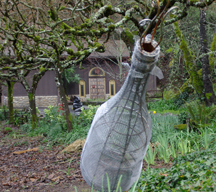 As we arrived at Schramsberg, it began raining and we needed to quickly decide which of three buildings was the visitor’s center. A large Victorian style house sits towards the back of the property with a lovely landscaped garden in front of it. The visitor’s center is to the left of the garden located in front of the house. Schramsberg, founded in 1862, is an ideal winery to visit if you are looking for sparkling wine, a sense of history and a great tour. Tom, our tour guide, made it a point to greet everyone personally. In the entry room, the history of Schramsberg lines the walls. Several frames hold menus from the White House, in which Schramsberg sparkling wine was used. Most unique are two wine glasses with the White House engraved upon them, enclosed in a wall mounted display case. Schramsberg sparkling wine has been served at functions for every presidential administration since President Nixon had it served while in Beijing in 1972.
As we arrived at Schramsberg, it began raining and we needed to quickly decide which of three buildings was the visitor’s center. A large Victorian style house sits towards the back of the property with a lovely landscaped garden in front of it. The visitor’s center is to the left of the garden located in front of the house. Schramsberg, founded in 1862, is an ideal winery to visit if you are looking for sparkling wine, a sense of history and a great tour. Tom, our tour guide, made it a point to greet everyone personally. In the entry room, the history of Schramsberg lines the walls. Several frames hold menus from the White House, in which Schramsberg sparkling wine was used. Most unique are two wine glasses with the White House engraved upon them, enclosed in a wall mounted display case. Schramsberg sparkling wine has been served at functions for every presidential administration since President Nixon had it served while in Beijing in 1972.
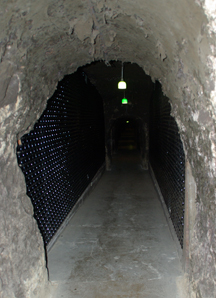 Soon it was time to begin our tour, which began with the history of Schramsberg. This winery is the second oldest winery in Napa Valley. Jacob and Annie Schram, German immigrants, moved to this property in 1862. By 1870, Schramsberg had 30,000 grapevines and Chinese laborers dug the first hillside caves for wine aging, still in use today. Using picks and shovels the laborers created a half-mile of caves. Additional caves were dug in 1881. In 1880, Robert Louis Stevenson visited Schramsberg. In his book, Silverado Squatters, he describes his visit.
Soon it was time to begin our tour, which began with the history of Schramsberg. This winery is the second oldest winery in Napa Valley. Jacob and Annie Schram, German immigrants, moved to this property in 1862. By 1870, Schramsberg had 30,000 grapevines and Chinese laborers dug the first hillside caves for wine aging, still in use today. Using picks and shovels the laborers created a half-mile of caves. Additional caves were dug in 1881. In 1880, Robert Louis Stevenson visited Schramsberg. In his book, Silverado Squatters, he describes his visit.
The caves are dark with low light. Lichen, several inches to two feet long, hang from the ceiling. Lichen helps purify the air and lower the humidity. The caves are lined with bottles upon bottles stacked on their sides 100 feet deep. Occasionally we saw a pipe sticking in where there should have been a bottle. For the first few weeks when the bottles are beginning their second fermentation there is a possibility a bottle may explode. To protect other bottles and people passing by, a covering is placed over the bottles, to keep exploding bottles from affecting other bottles or people. The bottles will remain in the cave for two to ten years.
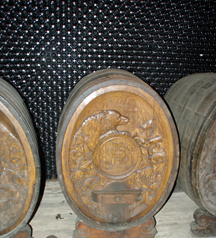 Tom began to discuss the sparkling wine process. The large punt at the bottom of a sparkling wine bottle gives the bottle greater strength. Riddling at Schramsberg is done my hand. For three weeks the riddled bottles are not tilted and for the next three weeks the riddled bottles are tilted. At the end of the six weeks, the lees have reached the neck of the bottle. At this point the neck is place in a frozen glycol solution for two minutes and the lees are frozen. By removing the crown cap the frozen lees eject out of the bottle. We learned that during the process of disgorgement, the frozen lees eject out of the bottle with a force of approximately 75 miles per hour. The bottle is now ready for dosage, the cork and the cage.
Tom began to discuss the sparkling wine process. The large punt at the bottom of a sparkling wine bottle gives the bottle greater strength. Riddling at Schramsberg is done my hand. For three weeks the riddled bottles are not tilted and for the next three weeks the riddled bottles are tilted. At the end of the six weeks, the lees have reached the neck of the bottle. At this point the neck is place in a frozen glycol solution for two minutes and the lees are frozen. By removing the crown cap the frozen lees eject out of the bottle. We learned that during the process of disgorgement, the frozen lees eject out of the bottle with a force of approximately 75 miles per hour. The bottle is now ready for dosage, the cork and the cage.
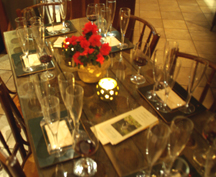 After our tour we followed Tom into a small room with three tables set for the members of the tour. We tasted four sparkling wines and a still wine. Tom told us that at Schramsberg, grapes are picked a month earlier and as a result they have high acid and low sugar ideal for making sparkling wines. Only first press juice is used for sparkling wine. While Tom opened the bottle of sparkling wine, he explained the “correct” way to open a bottle of sparkling wine. The importance of opening a bottle correctly was related with the following quote. “The ear’s gain is the palate’s loss.” In other words, the louder the pop the fewer bubbles will be in your sparkling wine glass.
After our tour we followed Tom into a small room with three tables set for the members of the tour. We tasted four sparkling wines and a still wine. Tom told us that at Schramsberg, grapes are picked a month earlier and as a result they have high acid and low sugar ideal for making sparkling wines. Only first press juice is used for sparkling wine. While Tom opened the bottle of sparkling wine, he explained the “correct” way to open a bottle of sparkling wine. The importance of opening a bottle correctly was related with the following quote. “The ear’s gain is the palate’s loss.” In other words, the louder the pop the fewer bubbles will be in your sparkling wine glass.
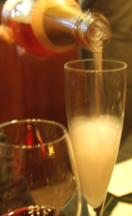 Sparkling wines are good for dinners because they are higher in acid and the bubbles cleanse the palate. Tom spoke of pairing foods with sparkling wines. Sparkling wines can certainly be paired with foods on a daily basis and are not just for special occasions.
Sparkling wines are good for dinners because they are higher in acid and the bubbles cleanse the palate. Tom spoke of pairing foods with sparkling wines. Sparkling wines can certainly be paired with foods on a daily basis and are not just for special occasions.
We tasted the Blanc de Blancs, J. Schram, Reserve, and the Brut Rose. We have gained an appreciation for sparkling wines and food. All the sparkling wines were crisp with good acidity. The small bubbles was a sign of their quality and helped cleanse the palate. All of these sparkling wines were delicious and would pair well with foods. Consider purchasing these wines and try them with dinner.
Schramsberg provided a great tour and tasting experience. You learn about the history of the property, the sparkling wine making process, opening sparkling wines and food pairings.
Schramsberg
1400 Schramsberg Rd.
Calistoga, CA 94515
Tour Information & Reservations: (707) 942-4558
General Information: (800) 877-3623
Visit these California organizations and wineries that partner with Wine Trail Traveler.
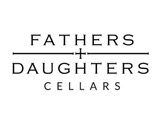 |
|||


